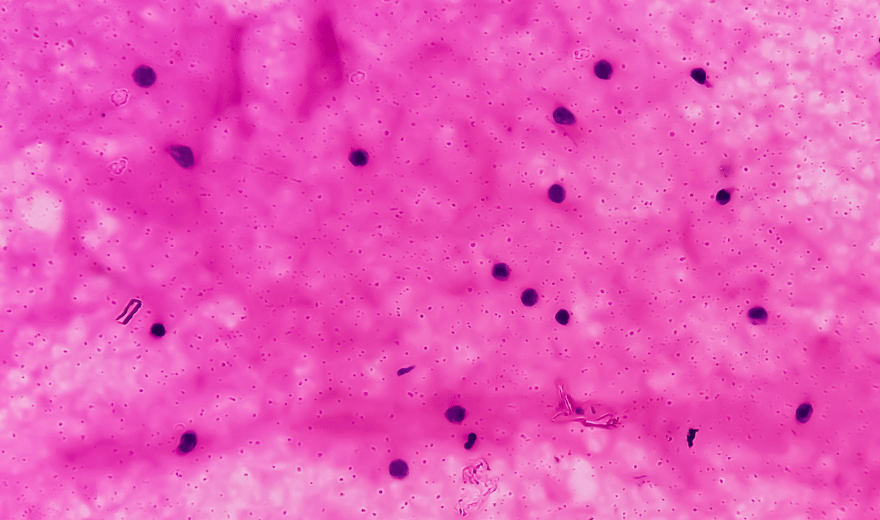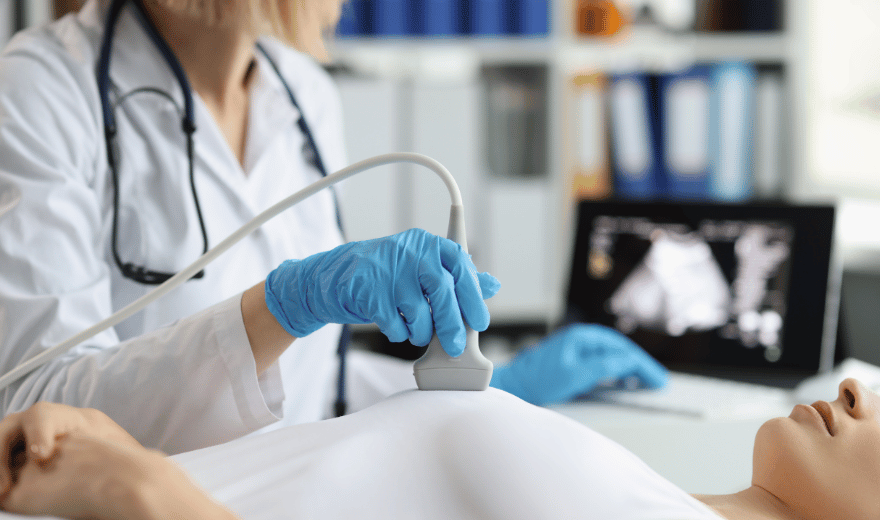
WHAT IS SCROTAL ULTRASOUND IMAGING?
Ultrasound or sonography involves sending sound waves into the body. These sound waves are reflected off the internal organs and are recorded by special instruments that create images of anatomic parts. No ionizing radiation (x-ray) is involved in ultrasound imaging. Ultrasound images are captured in real-time so they can show movement of internal tissues and organs, such as the flow of blood in arteries and veins.
Ultrasound imaging of the scrotum is the primary imaging method used to evaluate disorders of the testicles and surrounding areas. It is used when a patient is experiencing pain or swelling in the scrotum, a mass has been felt by the patient or doctor, or there has been trauma to the scrotal area.
WHAT ARE SOME COMMON USES OF THE PROCEDURE?
Ultrasound is a valuable tool for evaluating the testes, the epididymis (a tube that collects sperm made by the testicles) and the prostate. Scrotal ultrasound imaging can help determine the cause of testicular pain or swelling. Some of the problems ultrasound imaging can identify include: inflammation of the scrotum, an absent or undescended testicle, testicular torsion, abnormal blood vessels or a lump or tumor.
HOW SHOULD I PREPARE FOR THE PROCEDURE?
You should wear comfortable, loose-fitting clothing for your ultrasound exam. No other preparation is required. You will have to remove clothing and jewelry in the area to be examined.
HOW DOES THE PROCEDURE WORK?
The ultrasound transducer generates sound waves that pass through the skin and also serves as a microphone to record the returning sounds—the echoes. When pressed against the skin, the transducer directs high-frequency sound waves toward the structures being studied and records any changes in the pitch and direction of the returning echoes. The bounce-back echoes, or the signature, are automatically measured by the computer and converted electronically to a picture that shows what is happening at that instant—creating a so-called “real-time” image on the monitor screen. These images are frozen in time to obtain still pictures. If a Doppler study is done, blood flow can be displayed in color on the screen and actually heard.
WHAT WILL I EXPERIENCE DURING THE PROCEDURE?
There is usually no pain during a scrotal ultrasound. If the scrotum is very tender some discomfort may occur from the slight pressure of the transducer.
WHAT ARE THE BENEFITS VS. RISKS?
Benefits
- Ultrasound of the scrotum is the primary imaging method used to evaluate disorders of the testicles and surrounding areas.
- Ultrasound imaging is non-invasive (no needles or injections in most cases) and usually painless.
- Ultrasound is widely available.
- Ultrasound uses no ionizing radiation.
- Ultrasound can visualize structure, movement and function in the body’s organs and blood vessels.
- Ultrasound provides real-time imaging, making it a good tool for guiding minimally-invasive procedures such as needle biopsies.
Risks
- For standard diagnostic ultrasound there are no known harmful effects on humans.
WHAT DOES THE EQUIPMENT LOOK LIKE?
The equipment consists of a transducer and a monitoring system. The transducer is a small, hand-held device that resembles a microphone. The radiologist or sonographer spreads a lubricating gel on the area being examined and then presses this device firmly against the skin.
The ultrasound image is immediately visible on a nearby screen that looks much like a computer or television monitor. The sonographer and/or radiologist watches this screen during an examination and captures representative images for storage. If a Doppler study is done, the image may be in color and the signal can be heard as an audible sound. Often the patient is able to see and hear it as well.
HOW IS THE PROCEDURE PERFORMED?
The patient is positioned on his back on an examination table. A clear gel is applied to the area that will be examined. The gel helps the transducer make a secure contact and eliminates air pockets between the transducer and the skin, since the sound waves cannot penetrate air. The sonographer then presses the transducer gently but firmly against the skin and sweeps it back and forth to image the area of interest, reviewing the images on the monitor and capturing “snapshots” as required. The entire area of interest will be scanned, obtaining images from different perspectives. Sometimes the examiner may want to obtain images while you are standing upright.
When the examination is complete, the patient may be asked to dress and wait while the ultrasound images are reviewed, either on film or on a monitor. Often, though, the sonographer or radiologist is able to review the ultrasound images in real time as they are acquired, and the patient can be released immediately.
WHO INTERPRETS THE RESULTS AND HOW DO I GET THEM?
A radiologist (a physician experienced in ultrasound and other radiology examinations) will analyze the images and send a signed report with his or her interpretation to the patient’s personal physician. The patient receives ultrasound results from the referring physician who ordered the test results.
WHAT ARE THE LIMITATIONS OF SCROTAL ULTRASOUND IMAGING?
Ultrasound of the scrotum is helpful for finding abnormalities such as masses in the scrotum or testicles. However, it does not always permit an exact diagnosis (i.e., the exact type of tissue a mass is composed of, especially when the mass is solid). Blood flow images of the testicles are not always reliable in determining if the blood supply to a testicle has twisted. When searching for an absent testicle, ultrasound may not be able to find it if it is located in the abdomen because gas filled bowel loops may block the view.
Preparation
SCROTAL ULTRASOUND
Ultrasound or sonography involves sending sound waves into the body. These sound waves are reflected off the internal organs and are recorded by special instruments that create images of anatomic parts. No ionizing radiation (x-ray) is involved in ultrasound imaging. Ultrasound images are captured in real-time so they can show movement of internal tissues and organs, such as the flow of blood in arteries and veins.
Ultrasound imaging of the scrotum is the primary imaging method used to evaluate disorders of the testicles and surrounding areas. It is used when a patient is experiencing pain or swelling in the scrotum, a mass has been felt by the patient or doctor, or there has been trauma to the scrotal area.
Prostate ultrasound is used to detect possible disorders within a man’s prostate gland. Ultrasound images can indicate when the prostate is enlarged or when there is an abnormal growth that might be cancer.
SCROTAL ULTRASOUND PREPARATION
These instructions are IMPORTANT. Please follow them.
- You should wear comfortable, loose-fitting clothing for your ultrasound exam. No other preparation is required.
- You will have to remove clothing and jewelry in the area to be examined.
continue reading
Related Posts
Cancer screening is testing done on people who may be at risk of getting cancer, but who have no symptoms and generally feel fine.
Ultrasound imaging, also called ultrasound scanning or sonography, involves exposing part of the body to high-frequency sound waves to produce pictures of the inside of the body.
involves sending sound waves into the body. These sound waves reflect off the internal organs and are recorded by special instruments that create images of anatomic parts.



